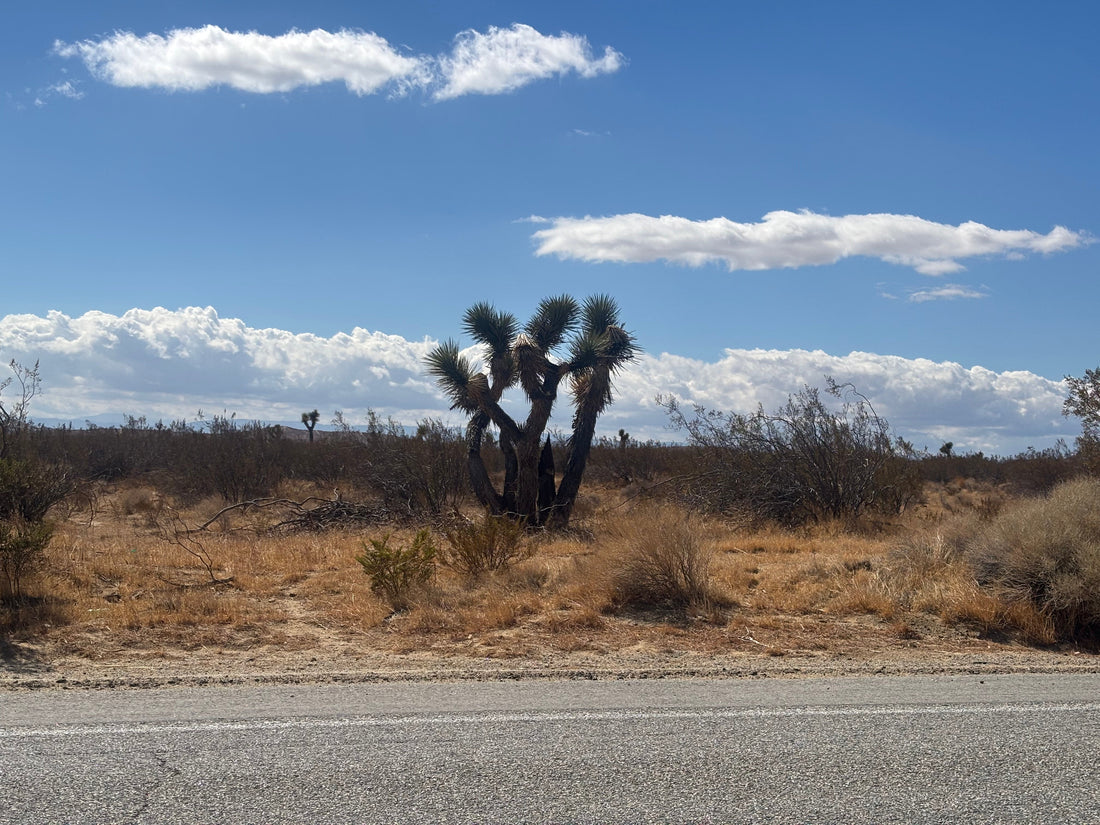
Beyond the Fence: The Courage to Stay Connected
Share
Pictured above: A Joshua Tree on the road to CCI - Tehachapi State Prison.
There’s a kind of courage that doesn’t make the evening news. It’s not about heroics or grand gestures—it’s about compassion. It’s about the courage to engage with people whom society has chosen to forget.
Whether it’s a friend, a relative, or even a stranger, engaging with someone who has been incarcerated requires emotional honesty and empathy. You can be cautious and wise—of course you should—but you can also be kind. It’s okay to feel conflicted, angry, or hurt. But those feelings don’t have to prevent connection.
As Dear Evan Hansen reminds us, “no one deserves to be forgotten.” And as Esmeralda pleads in God Help the Outcasts, compassion is often the most radical thing we can
The Road to Tehachapi
A few months ago, I made the three-hour drive to Tehachapi to visit a former coworker—let’s call him Harry. It’s not my first trip. You clear the chaos of Los Angeles after an hour, and then it’s open country roads, the kind that stretch endlessly through the desert past Edwards Air Force Base, into parts of California that few people ever see.
The desert is beautiful in its own way, wide and unflinching. But the beauty fades quickly when you pull up to the gates. Tehachapi has no lush lawns or blue ocean views—just chain-link fences topped with razor wire, concrete blocks, and rows of rock-lined pathways. It’s prison, and it looks every bit the part.
Still, behind that fencing are people—many of them decent, thoughtful, even brilliant—who made mistakes and are living through the consequences. Harry is one of them.
Why I Visit
Harry and I used to work together before his trial. He’s sharp, funny, and kind—the kind of person who asks about your kids and actually remembers their names. I don’t know every detail of what happened, and honestly, I don’t need to.
For me, the visit isn’t about guilt or innocence. It’s about showing up for someone whose world has gotten very small. Some incarcerated people get visitors every weekend. Others never receive a single one. Some have chosen isolation as self-protection; others simply have no one left.
But if you’ve ever received a letter from Harry, you’d know—connection matters. It changes the temperature of a day. It brings color into a gray world.
Life Behind the Wall
What struck me most is that Harry doesn’t actually know what the prison looks like. He hasn’t left his cellblock in over two years. When I describe the yard or the gates, it’s just a theory to him—a mental map of a place he’s never truly seen, even though it’s only seventy-five yards away.
Our conversations range from the mundane to the profound. We talk about the food, the TV shows he’s caught through commissary privileges, and how he keeps a small hustle going to make life manageable. He’s proud of building something even in a place designed to take everything away.
Harry knows he’s lucky to be on a Level II yard, where violence is less common and politics are minimal. But as he put it bluntly: “This still sucks.”
I told him, “Yeah, it’s prison—it’s supposed to.” We both laughed, because humor, even dark humor, is a small rebellion against despair.
The Human Side of Incarceration
There are 1.8 million people incarcerated in the United States. That’s 1.8 million people—sons, daughters, fathers, mothers—many of whom will one day come home. What kind of people do we want them to be when they do?
Our society has a tendency to draw a hard line: good people on one side, bad people on the other. But real life is messier. Many of us have done things we regret. The difference between being “in” or “out” often comes down to timing, privilege, or access to good legal counsel.
When we reach out—through a letter, a visit, or a simple acknowledgment that someone still matters—we become part of their rehabilitation. We make reentry possible long before release.
Why It Matters
It’s easy to believe that once someone’s behind bars, their story is over. But it isn’t. They’re still growing, learning, reflecting. Many are seeking forgiveness or simply a sense that they still belong to the human story.
When we cut people off, we don’t just punish them—we stunt the possibility of redemption. And if we truly believe in second chances, that’s where they begin: with connection.
You don’t have to drive to Tehachapi or San Quentin to make a difference. You can write a letter through organizations like The Aleph Institute, Prison Fellowship, or Inmates to Entrepreneurs. You can mentor someone coming home, support reentry programs, or simply change the way you talk about “ex-cons.”
The first step is to start.
A Final Reflection
Every time I leave Tehachapi, I’m reminded that we measure our humanity not by how we treat the best among us, but how we treat the most forgotten.
Prison is designed to strip life down to routine and consequence. But friendship, compassion, and connection—the decision to show up—add color back into that grayscale world.
So, if someone in your orbit has fallen, reach out. Even a note, even once.
Because second chances don’t begin at release—they begin when someone decides to believe in you again.
